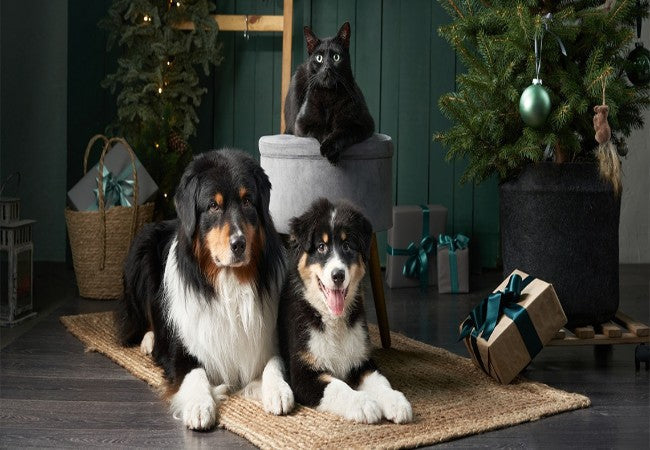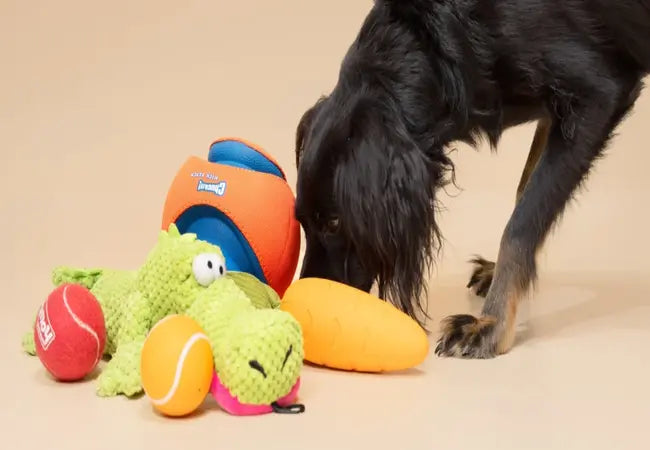Veterinary Guide to Canine Protein-Losing Enteropathy 2025 🩺🐶

In this article
Veterinary Guide to Canine Protein‑Losing Enteropathy 2025 🩺🐶
By Dr. Duncan Houston BVSc
🧬 What Is Protein‑Losing Enteropathy (PLE)?
Protein‑Losing Enteropathy (PLE) is a collection of serious gastrointestinal conditions that cause excessive loss of blood proteins—particularly albumin—through the intestinal wall. The loss of albumin and other proteins leads to reduced blood oncotic pressure, resulting in weight loss, edema, ascites, and effusions. PLE is a syndrome, not a specific disease—it can result from various underlying disorders.
👥 What Causes PLE in Dogs?
- Chronic inflammatory enteropathies (CIE/IBD): The most frequent underlying cause accounts for ~65% of PLE cases.
- Intestinal lymphangiectasia (IL): Dilation or obstruction of lymph vessels causes protein-rich lymph leakage.
- Neoplasia: Lymphoma, adenocarcinoma, and other GI tumours.
- Less common causes: Infectious (fungal, bacterial, parasitic), mechanical ulcers, right-sided heart failure, endocrine issues.
⚠️ Which Dogs Are Affected?
- Middle-aged to older dogs, but juvenile cases do occur.
- Breed predisposition in Soft-Coated Wheaten Terriers, Basenjis, Yorkshire Terriers, Shar-Peis, and Norwegian Lundehunds.
- No strong sex bias overall.
👀 Clinical Signs to Watch
- Diarrhea and vomiting—but some dogs may only show weight loss.
- Progressive weight loss, muscle wasting, and malnutrition.
- Edema (leg/ventral swelling), ascites, or pleural effusion from hypoalbuminemia.
- Occasional dyspnoea from pleural effusion; hypercoagulability (thromboembolism) from antithrombin loss.
- Abdominal fluid wave, thickened bowel loops, enlarged lymph nodes on exam.
🔍 Diagnostic Approach
- Bloodwork: Hypoalbuminemia (often <2.0 g/dL), with variable globulin. Rule out hepatic failure and proteinuria.
- Urinalysis: To exclude protein-losing nephropathy.
- Abdominal ultrasound: Key tools—detects IL (bright mucosal striations), wall thickening, lymphadenopathy, masses, effusions.
- Endoscopy or surgical biopsy: Endoscopic mucosal visualisation; surgery offers full-thickness samples.
- Histopathology: Essential to confirm diagnosis—identifies lymphangiectasia, IBD, and neoplasia.
- Additional tests: Fecal alpha1-antitrypsin, bile acids, infectious disease screening as needed.
🛠️ Treatment & Management
1. Treat the Underlying Cause
- For IBD/CIE: Hydrolyzed or novel protein, low-fat diet. Add probiotics, vitamin B12 & D as needed.
- For IL: Ultra-low-fat diet plus immunosuppressive prednisone.
- For neoplasia: Surgical mass removal ± chemotherapy.
- Supportive care: IV fluids, plasma or colloids, diuretics, occasional abdominocentesis for effusion.
- Anticoagulants: To reduce risk of thrombotic events.
2. Nutritional Support
- Diet is critical—high-quality protein, low-fat, easily absorbed. Use prescription GI or IL diets.
- Supplement B₁₂ if deficient; low vitamin D may worsen prognosis.
- A feeding tube may be needed for anorexic dogs.
3. Medications & Monitoring
- Prednisone: Starting dose ~1 mg/kg/day for inflammatory causes.
- Immunosuppressants: Azathioprine or chlorambucil for refractory cases.
- Plasma expanders: Use albumin or plasma transfusions if oncotic pressure is critically low.
- Vitamin supplementation: B12, D, possibly folate and magnesium.
- Antithrombotics: Low-dose aspirin or clopidogrel recommended.
📈 Prognosis & Monitoring
- Prognosis varies: good for IBD-responsive or IL cases; guarded in lymphoma or refractory disease.
- Low albumin + low vitamin D/B12—poorer outcome.
- Monitor albumin, globulin, B12, vitamin D, electrolytes, and CBC every 2–4 weeks initially, then every 3–6 months.
- Serial ultrasound may be used to reassess bowel changes and effusions.
🏡 Home Care & Prevention
- Strict adherence to diet—no table scraps or unprescribed foods.
- Manage other chronic conditions (cardiac, endocrine) vigilantly.
- Regular rechecks—weight, appetite, fecal consistency.
- Maintain vaccination & deworming—minimize infectious or parasitic triggers.
📱 Ask A Vet Telehealth Support
- 📸 Upload photos of ascites, edema, and body condition to monitor trends.
- 🔔 Receive scheduled reminders for diet, supplements, meds, and lab rechecks.
- 🩺 Video consultations to interpret follow-up bloodwork and adjust treatment.
🎓 Case Spotlight: “Milo” the Wheaten Terrier
Milo, a 6‑year‑old Soft‑Coated Wheaten Terrier, presented with chronic diarrhea, weight loss, and generalized edema. Bloodwork showed albumin 1.3 g/dL and low vitamin D. Abdominal ultrasound revealed bright mucosal striations and effusion. Endoscopic biopsies confirmed lymphangiectasia with lymphoplasmacytic enteritis. He was hospitalized for IV fluids, plasma, a low-fat diet, B₁₂ and vitamin D supplements, and prednisone. With discharge diet and telehealth check-ins, Milo regained muscle mass, normalized albumin to 2.5 g/dL in 8 weeks, and remains well on maintenance therapy with Ask A Vet support 🐶💗.
🔚 Key Takeaways
- PLE is a syndrome of excessive protein loss via the intestines, leading to hypoalbuminemia, edema, effusions, and malnutrition.
- Common causes: IBD, intestinal lymphangiectasia, lymphoma; diagnosis requires careful work-up, including imaging and biopsy.
- Multimodal treatment—diet, immunosuppressives, anti‑thrombotics, and nutritional support—is essential.
- Prognosis depends on cause and response; early detection and monitoring improve outcomes.
- Ask A Vet telehealth provides continuous monitoring, diet adherence, medication reminders, and improved owner engagement 📲🐾
Dr Duncan Houston BVSc, founder of Ask A Vet. Download the Ask A Vet app today to guide your dog’s PLE journey—from diagnosis and hospital support to long-term diet planning and remote monitoring for sustained recovery 🐾📲






